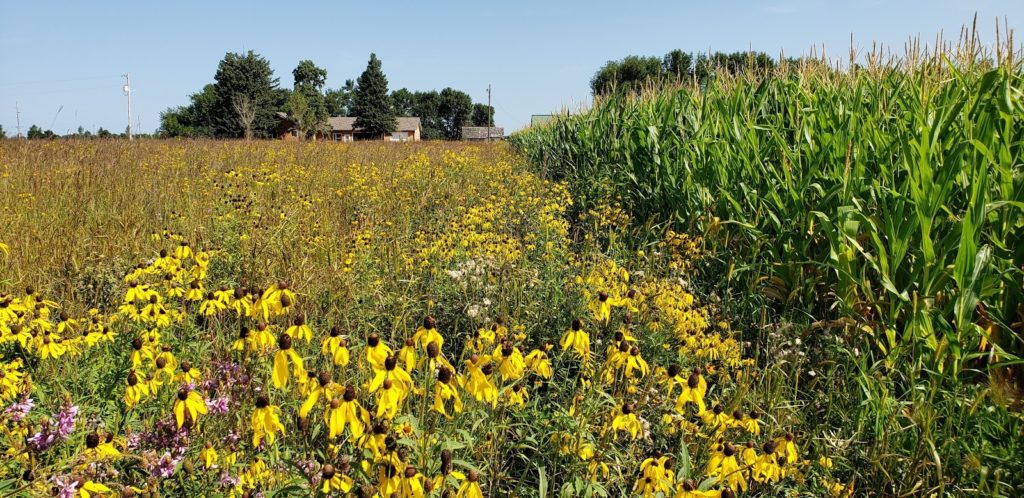New EPA Approaches Enhance Collaboration and Conservation Efforts for Farmers
The approaches follow settlement of litigation challenging the agency’s compliance with the Endangered Species Act

The U.S. Environmental Protection Agency (EPA) recently unveiled additional steps to ensure the protection of endangered species from pesticide exposure while at the same time supporting the agricultural community. In a recent press release, EPA Assistant Administrator Michal Freedhoff emphasized the importance of aligning conservation goals with agricultural practices to achieve a balance between safeguarding biodiversity and maintaining a robust food supply.
One notable development highlighted in the press release is a Memorandum of Understanding (MOU) signed by EPA and the U.S. Department of Agriculture’s Natural Resources Conservation Service (NRCS). This memorandum represents a significant stride towards recognizing and incentivizing farmers who adopt voluntary conservation practices endorsed by the NRCS.
Under this agreement, farmers voluntarily implementing NRCS conservation practices stand to receive credit toward fulfilling required pesticide mitigation measures on EPA approved labels. Some voluntary practices, aimed at improving environmental health and quality also could mitigate pesticide drift and runoff, thereby contributing to the protection of endangered species, while minimizing impacts on agricultural productivity.
U.S. Department of Agriculture Under Secretary for Farm Production and Conservation Robert Bonnie emphasized the importance of acknowledging the multifaceted benefits of NRCS programs stating, “Farmers who use strong conservation practices developed by NRCS should be given credit for all of the benefits these practices provide, including reducing the off-site movement of pesticides.”
In September 2023, the EPA announced the resolution of longstanding litigation covering more than 1,000 pesticide products, effectively addressing allegations of ESA violations. The litigation, initiated in 2011 by the Center for Biological Diversity and Pesticide Action Network, challenged the EPA’s registration and reevaluation of hundreds of pesticide active ingredients, encompassing a vast array of pesticide products. Known as the “megasuit,” this legal dispute underscored the complexities inherent in protecting ESA-listed species from adverse pesticide exposure, while minimizing impacts on agricultural pest management needs.
Key components of the settlement included the development and implementation of mitigation measures for listed species vulnerable to pesticide exposures. These measures, part of the EPA’s multichemical, multispecies approach, aim to address the potential impacts of pesticide use on hundreds of ESA-listed species. Additionally, the EPA commits to completing ESA work for specific pesticide categories, such as organophosphates and rodenticides, and hosting workshops to explore innovative strategies like offsets for mitigating pesticide impacts on ESA-listed species.
Deputy Assistant Administrator for Pesticide Programs in EPA’s Office of Chemical Safety and Pollution Prevention Jake Li shared additional insight during two discussions with Farmers for Monarchs last year. Li’s presentations shed further light on the initiatives being developed and implemented by the EPA following the 2023 litigation resolution.
Li highlighted the EPA’s proactive stance on early mitigation, emphasizing the importance of initiating mitigation actions for listed species without waiting for final biological opinions. This approach enables the EPA to take timely action for both listed and non-listed species, by minimizing risks associated with pesticide exposure.
One significant initiative mentioned by Li is the Vulnerable Species Pilot Project, developed in collaboration with the U.S. Fish and Wildlife Service , aimed at identifying and protecting 27 listed species particularly vulnerable to pesticides. This project underscores the EPA’s commitment to early intervention and highlights the agency’s responsiveness to emerging conservation challenges.
Additionally, Li discussed the draft herbicide strategy proposed by the EPA, which outlines a framework for identifying mitigation measures benefiting approximately 900 ESA-listed plant and animal species. By incorporating traditional and innovative measures to reduce adverse exposures from spray drift and runoff, the EPA aims to meet protection goals for listed species while minimizing impacts on agricultural production.
EPA’s decision to develop the memorandum with the U.S. Department of Agriculture underscores the agency’s recognition of the role of voluntary conservation practices in pesticide risk mitigation. Li emphasized the importance of collaboration with NRCS in promoting practices that minimize pesticide drift and runoff, thereby safeguarding endangered species’ habitats.
This initiative directly addresses feedback received on EPA’s draft herbicide strategy and offers flexibility to growers in selecting practices that align with their specific land characteristics and conservation goals. By integrating voluntary NRCS conservation practices into pesticide label requirements, EPA aims to streamline implementation processes and facilitate practical solutions for protecting endangered species.
Moving forward, EPA and the U.S. Department of Agriculture plan to engage in further discussions and workshops, and gather input from producers, to develop guidance on how specific NRCS practices can be incorporated as pesticide mitigation measures on pesticide labels. This ongoing collaboration demonstrates the commitment of both agencies to foster sustainable agricultural practices while safeguarding vulnerable ecosystems.
In summary, the EPA’s willingness to consider voluntary NRCS conservation practices, consistent with the memorandum’s future deliberations, signifies a pivotal moment in aligning agricultural practices with conservation efforts that satisfies the terms of the lawsuit settlement. Farmers for Monarchs will be following up with NRCS, EPA and U.S. Department of Agriculture to gain a better understanding of the expected impact and implementation of this guidance. We will be communicating what we learn directly with farmers and producers.
